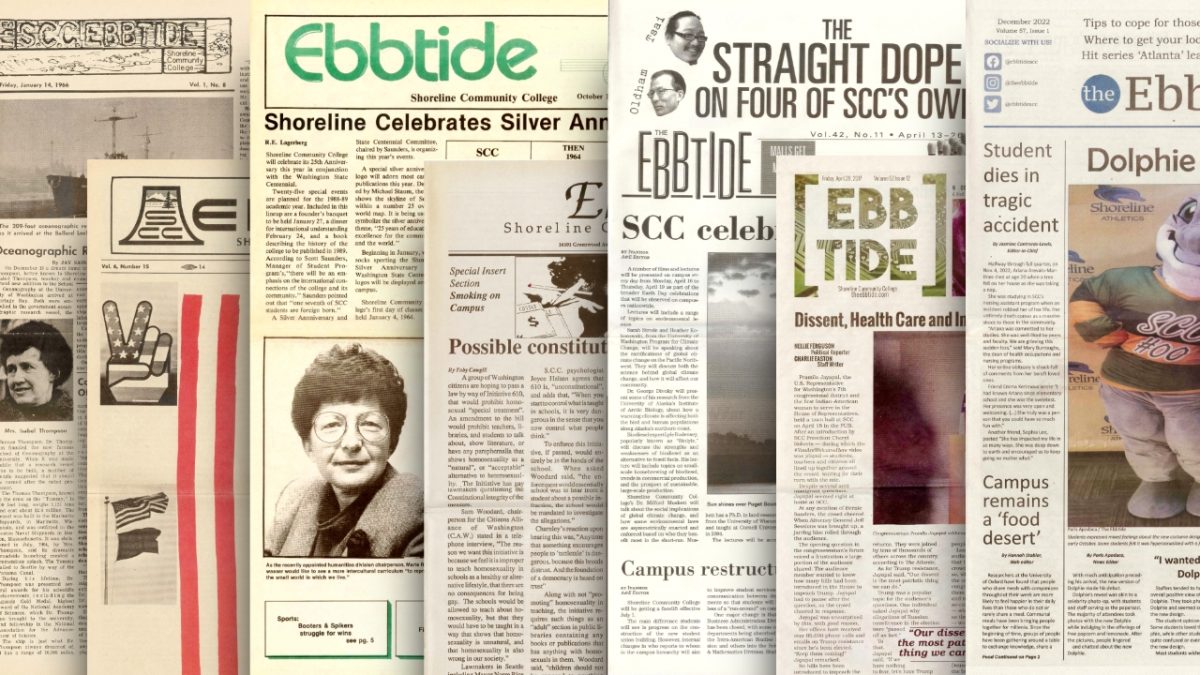“THE ROOM” LEAVE SPACE FOR LAUGHTER
“Spoons!” was the first thing I heard, before a storm of plastic silverware hailed down on the second row in Pacific Place Theater.
“The Room,” director Tommy Wiseau’s love-child of 2003, returned to the big screen for one night alone. Over 500 theaters in the United States were playing the film for one night only to allow newcomers and fans to come see the cult classic.
The popularity of the film spiked in 2017 following James Franco’s release of “The Disaster Artist,” the backstory to the creation of “The Room” and the friendship between Wiseau and his best friend and co-actor, Greg Sestero.
Peter Crest, a writer for IndieWire.com, conducted a phone interview with Wiseau in 2013 where the director confirmed that the project had taken “nearly 20 years.” Franco even named Wiseau’s movie as the “Citizen Kane of best-worst movies” on the Jimmy Fallon Show in 2017.
Beneath the atrocious acting and lackluster lines it’s known for, “The Room” tells the story of Johnny (Wiseau), a successful banker in San Francisco thoroughly in love with his unfaithful fiancee Lisa, who begins an abrupt affair with Johnny’s best friend Mark (Sestero), leading to an explosive finale.
The showing itself played upon aspects from audience-interaction movies like “The Rocky Horror Picture Show.” At “Rocky Horror” screenings, audience members dress up like characters, carry certain throwable objects to toss at specific scenes and shout out comments that cause the rest of the audience to erupt in laughter.
“The Room” shared a reminiscent audience-interaction vibe. A picture frame of a silver spoon is displayed randomly in Johnny and Lisa’s apartment, and each time it was seen on screen, the audience screamed “spoons,” and a cascade of plastic white spoons came to land upon the lower rows of the theater.
Another important aspect of audience interaction during the film was the comments from movie-goers about each and every character. The lovable Denny, played by Philip Haldiman, was coveted by the audience and genuine worry would be expressed at any of Denny’s misfortunes.
Characters would often leave their apartment door open, allowing just about everybody to crash in on the scene, leading the audience to openly cry “Shut your door!”
Wiseau’s “future wife” Lisa, portrayed by Juliette Daniels, is quickly found to be the antagonist who shatters Johnny and Mark’s friendship. The audience heavily participated in making lewd remarks and jokes about Lisa’s strange seduction methods and her flip-flopping between being in love with her fiance to hating his guts.
Despite not having a rating on the single night it was showing in Seattle, “The Room” is definitely meant for underage eyes. Lisa is sexually active with both characters, depicted in about five strenuously long, awkward sex scenes. However, audience members made the scenes somewhat less cringy by adding sound effects to the “eating kissing,” as the main trio seemed to want to eat the others’ faces instead of connecting lips.
Alongside the long sex scenes and confusing motivations, “The Room” has an absolutely terrible script and delivery.
Joining the movie-going crowd, SCC freshman Jacob Martin participated alongside a majority of the theater in throwing out commentary and hilarious names for characters, such as calling Lisa a “foul temptress,” but maintained that “the acting destroys” the film as a whole.
Behind the scenes of production, Wiseau’s inability to portray a deeply hurt man who would never hit his fiance has remained a pinnacle moment in the movie’s history.
In Sestero’s 2013 novel “The Disaster Artist”, Sestero explains the hardship of the three hours and thirty-two minutes it took to help direct Wiseau saying only seventeen words: “It’s not true! I did not hit her! It’s bullshit. I did not! Oh Hi Mark.”
Sestero’s book and Franco’s meta-commentary provide the audience with a peculiar situation regarding Wiseau’s inability to say his lines. According to Sestero’s book, “he couldn’t remember his lines. He couldn’t hit his mark.”
Wiseau had added that particular scene after rewriting the original script due its lack of emotional intensity and had thrown in the sub-plot of Lisa claiming Johnny is abusive towards her.
The scene took place on the roof of Johnny’s San Francisco apartment, with the background being a painfully obvious green screen, and Mark is sitting in a chair waiting for him. Wiseau would emerge from the rooftop door, “mumbling and disoriented.”
Finally, after a possible concussion while hitting the doorknob and another failed practice with Sestero in Wiseau’s dressing room, Wiseau emerged triumphantly after three hours, with a monotone but complete recitation of his seven-second line.
“There’s actual good actors in the movie, but they’re given like, horrible dialogue,” Martin said.
For example, Lisa’s mother casually says only once that she has breast cancer, and it is never reiterated in the film despite it being mentioned relatively close to the beginning. Of course, the audience didn’t fail to notice this and would consistently ask the screen about her casual encounter with cancer.
The random actors and actresses who also starred in “The Room” shared a combination of good and bad one-liners.
Robyn Paris plays Lisa’s best friend Michelle, who claims to “not understand Lisa” and her cheating ways while always having a huge smile on her face. Introduced halfway through the movie, Kyle Vogt plays Peter, the most logical and sensible of the entire cast, and provides Johnny with emotional support. Not only does Vogt randomly appear, Johnny even questions why he’s with him, and Vogt responds with “Well, you asked me to come,” before simply leaving the movie for good. Peter’s potential to be a character toward the end died out just as abruptly as he had arrived.
The character Chris, an audience favorite, has apparently been friends with Lisa and Johnny for years, and is in Lisa’s business about her cheating. Not only does he appear about fifteen minutes before the finale, Chris stands literally behind Lisa and then proclaims that he knows what she’s done — when he had been obviously listening to her confession moments before, as the audience loudly observed.
Clearly, “The Room” has an endless list of inconsistencies. In fact, it’s never stated what “room” is “The Room.” Whether or not it was on purpose, Lisa and Johnny said different years upon which they have been together, jumping from five to seven. There’s also the curious case of why the main characters never seem to close their front door and how people without keys can get in when it is closed. Overall, it left nearly everyone in the audience baffled.
“The Room” left a door open to curious onlookers, entrapped them when they entered, and somehow forgot to lock it behind us to keep us there. Audience members left the theater feeling anywhere from confused, to somewhat satisfied, to thoroughly over it. The film left behind a trail of questions, but also tons of laughter.
Whether or not Wiseau intended this outcome, he has benefited greatly from it and has two more films coming out this upcoming March and November.
If you weren’t painfully confused before, then get ready to get thrown into another room of randomness and painfully hilarious acting.






